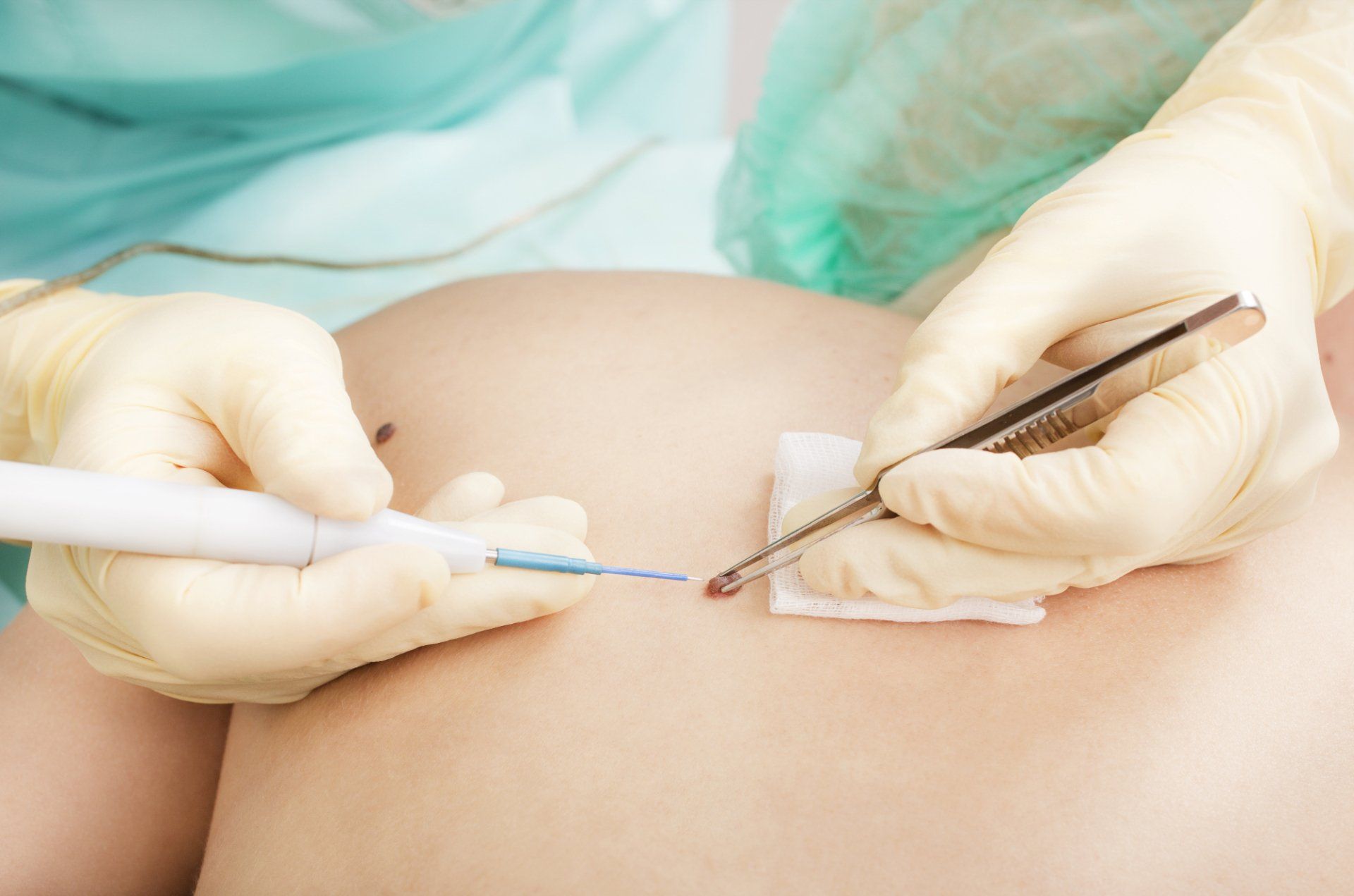Download a PDF copy of our Electrodessication and Curettage After Care Instructions here.
Electrodessication and Curettage –
POST-TREATMENT INSTRUCTIONS
What should I do?
Remove your dressing in 24 hours.
It is ok to shower and wash with mild soap once the dressing is off. Dove®, Cetaphil®, or Purpose® do not have perfumes or dyes and are recommended.
Gently wash the area with a washcloth or gauze once a day. Let the area dry.
Apply Vaseline® or Aquaphor® to the area once or twice a day (it is important to keep the wound moist).
Cover the wound with a piece of gauze and tape or band-aid.
This type of wound will take about 3 to 6 weeks to heal. - It can take longer to heal if the wound is larger, deeper or on the lower legs.
Over time the wound may have a yellowish color in the center, this is normal; it is the regrowth of your skin. - It is normal for some redness to develop around the wound.
Your wound may be tender to the touch but as time goes on it should become less painful.
If your wound is on your arm or leg, elevate that arm or leg as much as possible to help with circulation, healing and to prevent swelling and infection.
Call our office if you experience:
Pain that gets worse a few days after the procedure
Pronounced swelling - A temperature above 100.5 for 24 hours
Redness (increased outward from the wound, greater than an inch), warmth, swelling, and pus-like drainage at the site
Bleeding- If you have bleeding, apply firm pressure over the gauze pad for 20 minutes. If it doesn’t stop after 20 minutes, apply pressure again for 20 minutes.
Who do I contact with questions? - During regular office hours, please call us at: 610-484-3761.
For non-urgent matters, you may also reach us by e-mail at imarcy@mycleardermatology.com


